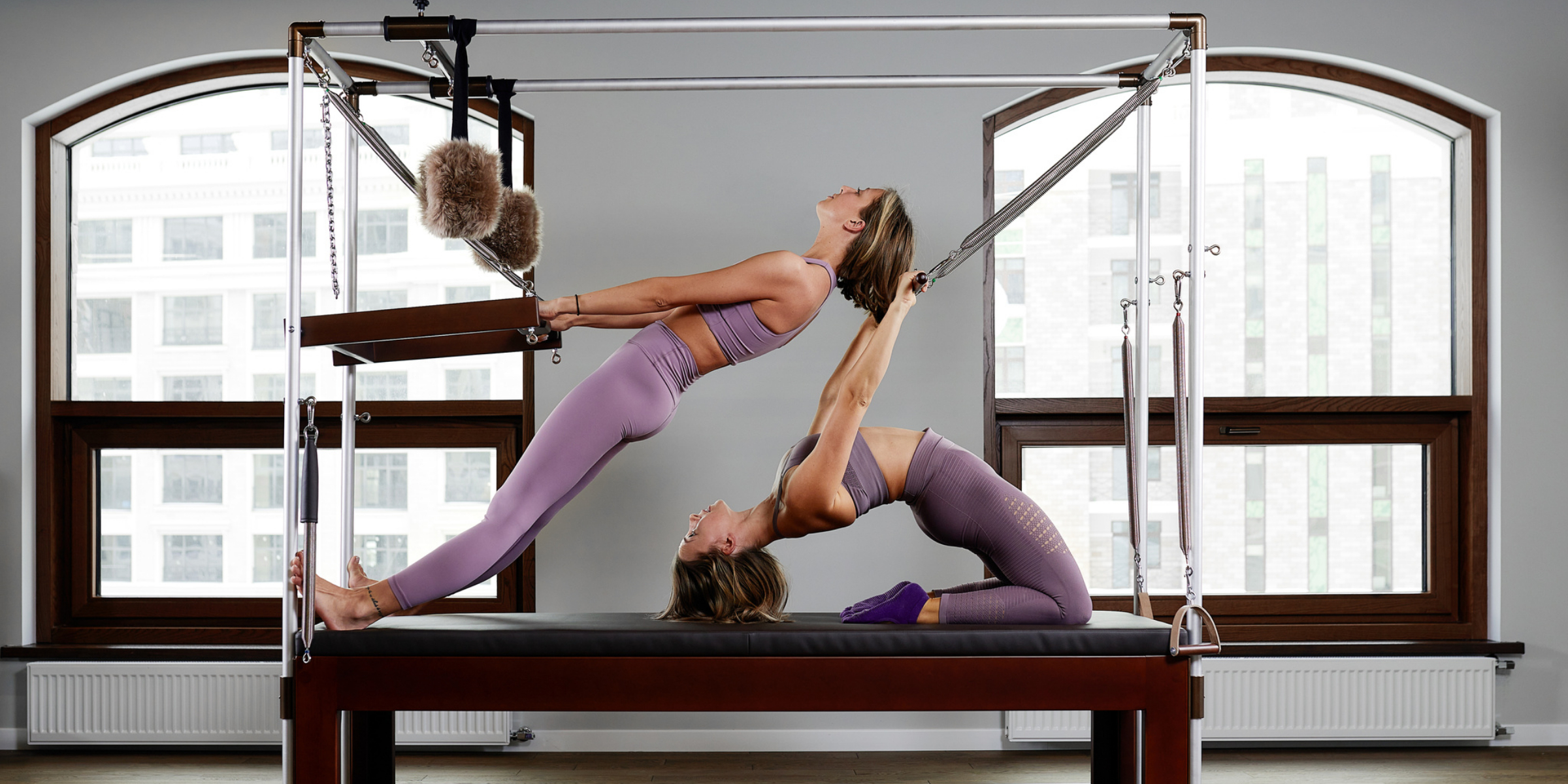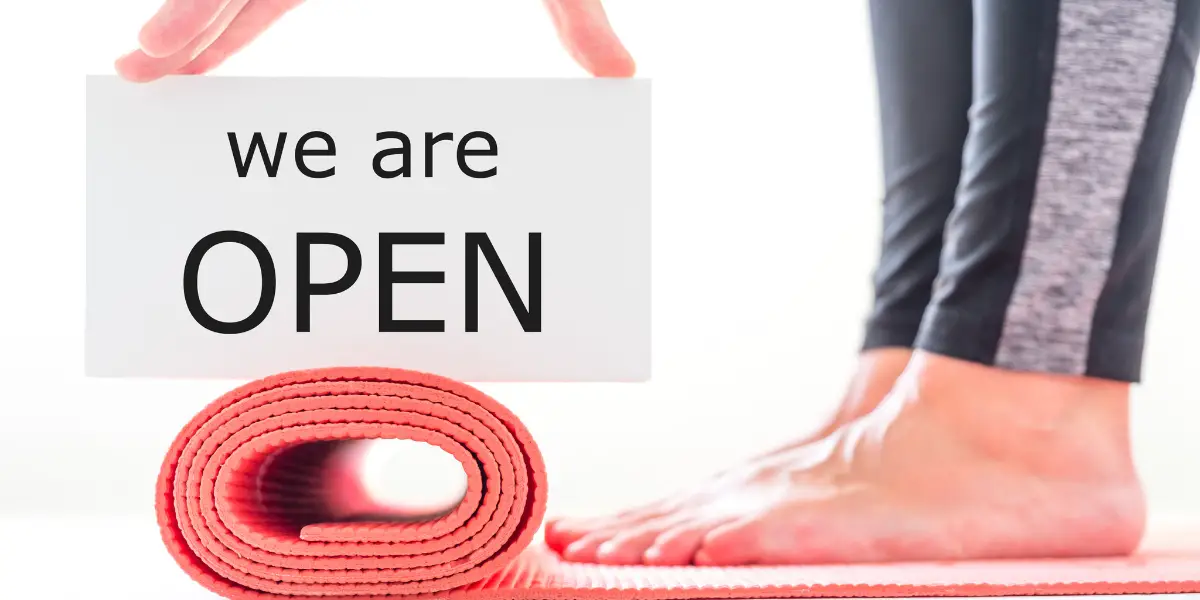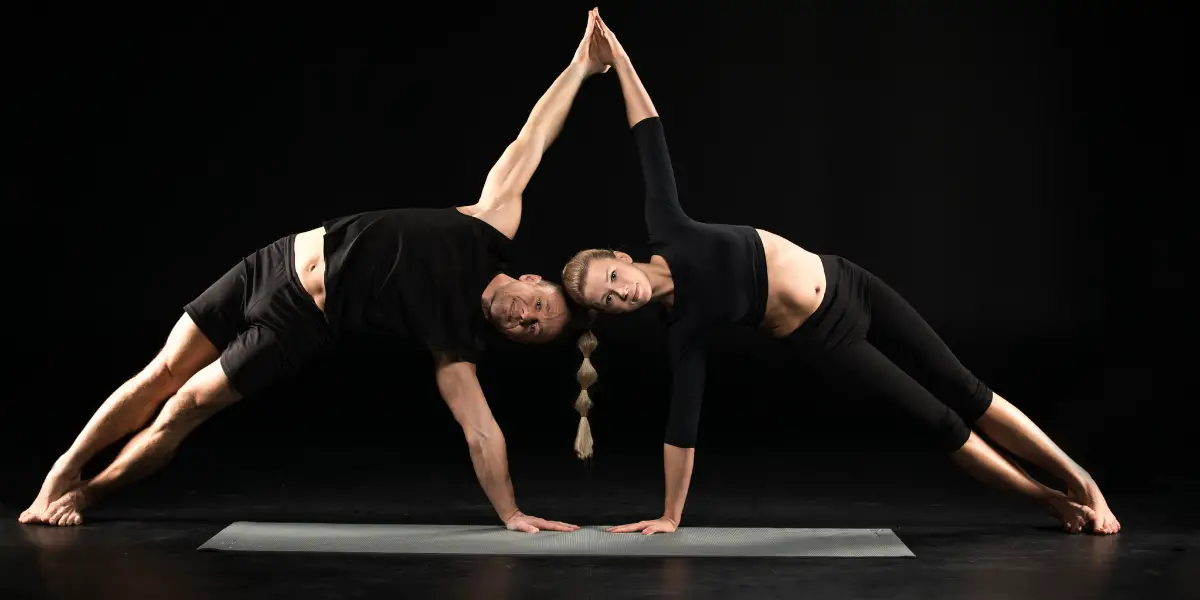When diving into Pilates, you’ll likely come across two standout pieces of equipment: the Cadillac and the Reformer. Both have benefits and unique features, but how do they differ?
In this article, we’ll break down the contrasts between these two popular apparatuses, making understanding their unique roles in the Pilates world easier.
Design and Functionality: A Closer Look at Each Apparatus
The beauty of Pilates lies not just in the movements themselves but also in the innovative designs of its equipment. The Cadillac and the Reformer, two of the most iconic apparatuses in the Pilates world, boast unique designs catering to specific needs and functionalities. Let’s dive deeper into the intricate blueprints of these two machines and uncover the essence of their design philosophy.
The Cadillac: An All-In-One Station
- Structure: The Cadillac has a raised horizontal platform surrounded by a sturdy frame resembling a four-poster bed.
- Attachments: Diverse tools like the trapeze, leg springs, arm springs, push-through bars, and roll-down bars offer multifaceted exercise variations. These attachments help in enhancing flexibility, strength, and balance.
- Functionality: The Cadillac is particularly beneficial for rehabilitation, offering support and challenge. It accommodates various exercises, from gentle and therapeutic to advanced acrobatics.
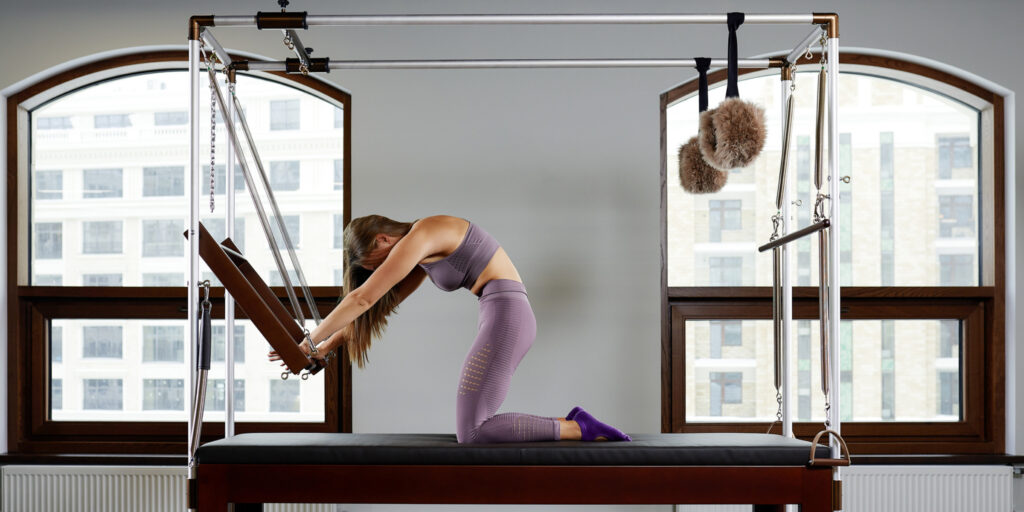
The Reformer: Dynamic Versatility
- Structure: With a sliding carriage anchored by springs, the Reformer has a sleek, rectangular design. The apparatus also features foot bars, shoulder blocks, and adjustable straps.
- Attachments: Some modern Reformers come equipped with towers, providing added exercise options by incorporating vertical springs. The springs can be adjusted for resistance, catering to different strength levels and exercises.
- Functionality: The Reformer focuses on alignment, balance, and core strength. Its sliding mechanism promotes controlled, fluid movements and challenges users with dynamic resistance.
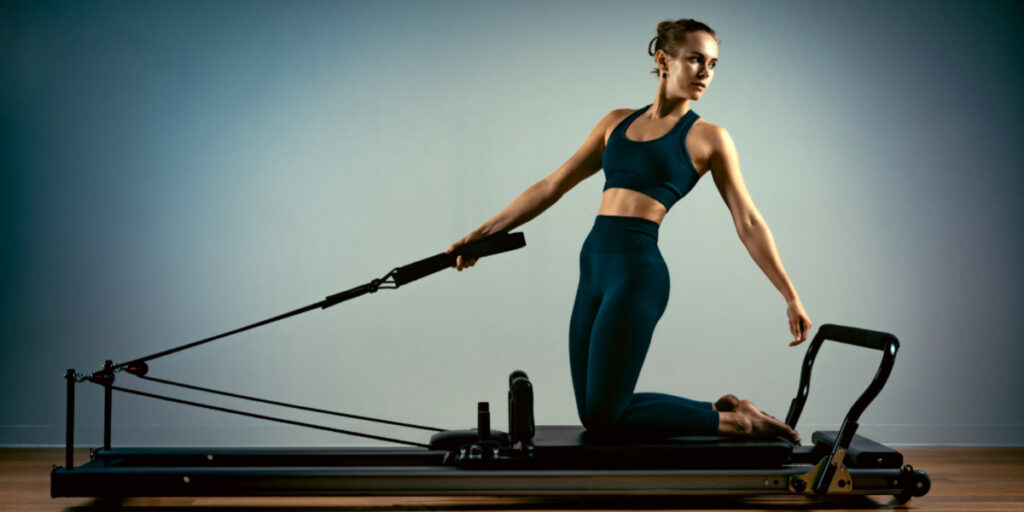
The Interplay of Form and Function
While the two apparatuses differ in their designs, both embrace Joseph Pilates’ principle of controlled resistance to build strength, improve flexibility, and enhance mind-body coordination.
Each piece, with its distinct features, complements the other, offering a comprehensive workout regimen. Whether you’re executing the elegant stretches on the Cadillac or the powerful sequences on the Reformer, the fusion of design and functionality is evident, making the Pilates experience holistic and transformative.
Exercise Variations: The Diverse Range of Movements
Pilates, as a discipline, thrives on diversity and adaptability, vividly reflected in the multitude of exercises one can perform on its apparatuses. The Cadillac and the Reformer, two of the most pivotal pieces, offer a spectrum of movements catering to different needs, fitness levels, and objectives. Let’s delve into some of the standout exercises for both machines, highlighting their range and versatility.
Cadillac’s Choreography
- The Roll-Back: Using the push-through bar, this movement focuses on spinal articulation, promoting flexibility in the back while also engaging the abdominals.
- Leg Springs Series: Attached to the top of the Cadillac, leg springs allow for many leg movements that strengthen the lower body and enhance hip mobility.
- Trapeze Swings: Engaging both the upper and lower body, these swings are great for building strength, improving balance, and enhancing coordination.
- Teaser on the Trapeze: This advanced move challenges core stability, leg strength, and body alignment in one graceful motion.
Reformer’s Rhythms
- Footwork Series: Using the foot bar, this foundational set of exercises warms the body, strengthens the legs, and refines alignment.
- The Hundred: A classic Pilates exercise, this core-engaging movement on the Reformer uses the straps and challenges endurance and breath control.
- Rowing Series: Engaging the arms, shoulders, and core, these exercises range from “Into the Sternum” to “From the Chest,” each focusing on different muscle groups and motions.
- Short Spine: This therapeutic exercise promotes spinal articulation, stretches the hamstrings, and is a gentle inversion, providing decompression.
Infinite Possibilities
The exercises listed above merely scratch the surface. Both the Cadillac and the Reformer offer a plethora of movements that can be modified, intensified, or combined, ensuring that practitioners are constantly challenged and never bored.
From rehabilitating movements to athletic challenges, these apparatuses are equipped to offer a comprehensive palette of exercises, making the world of Pilates an ever-evolving dance of strength, flexibility, and control.
Choosing the Right Fit: Factors to Consider for Personal Needs
Navigating the realm of Pilates equipment can sometimes feel like deciphering a puzzle, especially when deciding which apparatus best aligns with one’s goals.
Both the Cadillac and the Reformer offer unique benefits, and while they may sometimes overlap in function, they cater to distinct needs. When determining the right fit for you, several factors come into play. Let’s examine some of these considerations to guide your decision-making process.
- Your Fitness Goals
- Rehabilitation Needs: For those recovering from injuries or seeking therapeutic exercises, the Cadillac, with its vast range of attachments, offers gentle, supported movements that can be tailored for rehabilitation purposes.
- Strength and Conditioning: If you aim for a dynamic workout that builds strength, especially core strength, and improves body alignment, the Reformer’s resistance-based exercises might be more suitable.
- Space and Versatility
- Studio Space: The Cadillac, being bulkier, requires more space. On the other hand, the Reformer, with its sleeker design, is often more suitable for home settings or smaller studios.
- Exercise Variety: The Cadillac’s myriad attachments provide a broader range of exercise options for those who crave variety. However, with its fundamental sequences, the Reformer allows for diverse and challenging routines.
- Experience Level
- Beginners: With its structured and straightforward design, the Reformer is often more user-friendly for those new to Pilates. Its guided tracks and settings provide a clear path for initial exploration.
- Advanced Practitioners: While both apparatuses cater to advanced exercises, the Cadillac, with its trapeze and other attachments, might offer seasoned Pilates enthusiasts more avenues for complex routines and challenges.
- Budget Considerations
- Investment: Generally, the Reformer is more budget-friendly than the Cadillac. However, it’s essential to consider the longevity, brand reputation, and potential additional attachments when assessing cost.
Integration in Practice: Combining Cadillac and Reformer Workouts
Integrating the Cadillac and Reformer in a Pilates session creates a harmonious blend of strength, flexibility, and dynamic movement. Begin with the Reformer’s dynamic nature, ideal for warming up. Simple exercises, such as the Footwork Series, activate the core, laying a solid foundation. Transitioning to the Cadillac, delve into deeper stretches.
Exercises like the Roll-Back enhance flexibility, preparing the body for more intense challenges. As you build momentum, return to the Reformer to push your limits with strength-based sequences like the Rowing Series. The Cadillac, with its acrobatic potentials like the Trapeze Swings, introduces dynamism, challenging body coordination and balance.
To conclude the session, focus on recovery and relaxation. Gentle movements on both apparatuses aid in muscle recovery, ensuring a rejuvenating finish. This combined approach, weaving the unique benefits of both machines, offers a comprehensive Pilates experience.
Sources:
https://modernreform.com/blogs/pilates-blog/pilates-cadillac-vs-reformer-whats-the-difference
https://sheppardmethodpilates.com/the-cadillac-vs-the-reformer-which-is-better/

